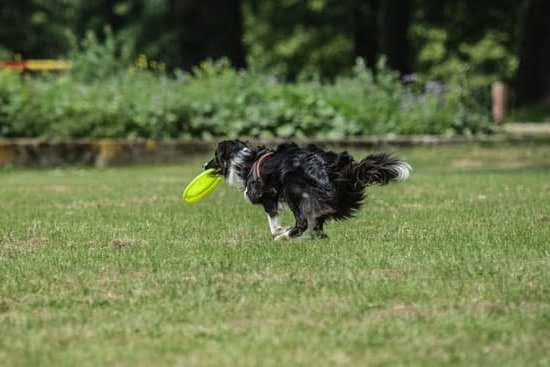Training a dog to bark at someone may seem like a peculiar request, but for some pet owners, it can be a useful skill. Whether for protection purposes or simply as a fun trick, teaching your canine companion to bark on command requires patience, consistency, and an understanding of your dog’s behavior. In this article, we will explore the various aspects of bark training, from understanding the importance of proper training to addressing aggressive barking behavior.
Understanding the behavior and triggers of dogs is crucial in any training process, especially when it comes to barking. Establishing trust and leadership with your dog is also essential for effective bark training. Basic commands play a significant role in this process, along with desensitization training for barking at strangers. Positive reinforcement techniques are also important tools for encouraging desired behavior in dogs.
Addressing aggressive barking behavior is a complex aspect of bark training that requires careful consideration and handling. It often necessitates seeking professional help for difficult cases. Patience and consistency are key throughout the entire process.
Ultimately, celebrating success and enjoying a well-trained dog should be the ultimate goal of any bark training endeavor. Whether teaching your dog to bark on cue or managing their barking behavior, proper bark training is crucial for maintaining a harmonious relationship between you and your furry friend.
Understanding the Behavior and Triggers of Dogs
One important aspect of understanding a dog’s behavior and triggers is recognizing the difference between appropriate and inappropriate barking. For example, if a dog barks excessively at strangers passing by the house, it may indicate territorial behavior that needs to be addressed through training.
On the other hand, barking in response to an intruder or potential threat can be a valuable form of protection and should be encouraged within reason. By understanding the specific triggers for a dog’s barking behavior, owners can tailor their training approach accordingly.
In addition to recognizing triggers, it is important for dog owners to consider breed-specific traits and individual personalities when addressing barking behavior. Certain breeds are known for being more vocal than others, while some dogs may have past experiences or traumas that contribute to their barking habits. Taking these factors into account can help owners develop a training plan that is effective and respectful of their dog’s unique needs and instincts.
Establishing Trust and Leadership With Your Dog
When it comes to training your dog to bark at someone, it is important to first establish trust and leadership with your furry friend. Building a strong relationship with your dog will make the training process more effective and enjoyable for both of you.
To establish trust and leadership with your dog, consider the following tips:
- Spend quality time with your dog: Engage in activities that both of you enjoy, such as playing fetch or going for a walk.
- Be consistent with rules and boundaries: Dogs thrive on routine, so it’s important to set clear boundaries and be consistent in enforcing them.
- Use positive reinforcement: Reward good behavior with treats, praise, or toys to reinforce positive habits.
- Establish yourself as the pack leader: Dogs are naturally inclined to follow a leader, so it’s important to demonstrate confidence and control in your interactions with your dog.
By focusing on building trust and establishing yourself as the leader in your relationship with your dog, you will create a solid foundation for successful bark training.
Remember that every dog is different, so be patient and adaptable in your approach. With time and dedication, you can build a strong bond with your dog while effectively training them to bark at someone when necessary.
Basic Commands for Bark Training
When training a dog to bark at someone, it is important to start with the basics. Teaching your dog basic commands will lay the foundation for successful bark training. Here are some essential commands to incorporate into your bark training regimen:
- Sit: Teaching your dog to sit on command can help you gain control when they are agitated and barking at someone.
- Stay: This command is crucial for preventing your dog from lunging or approaching the person they are barking at.
- Quiet: Training your dog to be quiet on command is essential for bark training. This command can be used to stop excessive barking when it becomes unnecessary.
Incorporating these basic commands into your bark training routine will not only help you control your dog’s behavior, but also build a strong foundation for more advanced training techniques. Consistent practice of these commands will contribute to a well-behaved and obedient dog.
When teaching your dog basic commands for bark training, it is important to use positive reinforcement techniques. Rewarding them with treats, praise, or playtime when they successfully follow a command will encourage them to continue displaying the desired behavior. With patience and consistency, you can effectively train your dog to bark at someone in a controlled and manageable manner.
Desensitization Training for Barking at Strangers
Understanding the Desensitization Process
Desensitization involves presenting the trigger (strangers) at a low intensity, below the threshold at which the dog would normally start barking. Over time, the intensity of the trigger is gradually increased as the dog becomes more comfortable and relaxed around strangers. This process helps the dog learn to associate strangers with positive experiences, rather than fear or anxiety.
Implementing Desensitization Techniques
One effective desensitization technique is counter-conditioning, which involves pairing something positive with the presence of strangers. For example, whenever a stranger comes into view, offer your dog a high-value treat or engage them in a fun game. This helps create a positive association with strangers and reduces their instinct to bark aggressively.
Another desensitization technique is systematic desensitization, where you expose your dog to strangers in a gradual and controlled manner. Start by having strangers at a distance where your dog remains calm and slowly reduce that distance over time as your dog becomes more comfortable. It’s important to pay attention to your dog’s body language and behavior throughout this process, ensuring that they remain relaxed and not showing signs of fear or aggression.
Consistency and Patience in Desensitization Training
Desensitization training requires patience and consistency. Each dog will progress at its own pace, so it’s essential to move forward only when they are ready. Rushing through this process can lead to setbacks and reinforce negative associations with strangers. By staying consistent with training methods and providing plenty of positive reinforcement, you can help your dog overcome their fear or anxiety around strangers and develop appropriate barking behavior.
Positive Reinforcement Techniques for Bark Training
The use of positive reinforcement techniques is a highly effective way to train a dog to bark at someone. Positive reinforcement involves rewarding your dog for exhibiting the desired behavior, in this case barking at someone when commanded to do so. This method focuses on the principles of giving rewards, such as treats or verbal praise, to encourage the dog to repeat the behavior in the future.
When implementing positive reinforcement techniques for bark training, it is important to understand the timing of the reward. The reward should be given immediately after the dog barks at someone as it helps the dog associate their action with the positive outcome. This can help strengthen the desired behavior and reinforce the command given.
One popular technique for using positive reinforcement in bark training is clicker training. A clicker is a small handheld device that makes a distinct clicking sound when pressed. The timing of this sound can mark the exact moment when your dog performs the desired behavior, which can then be followed by a reward. This method has been proven effective in teaching dogs new behaviors and reinforcing existing ones through consistent positive reinforcement.
| Positive Reinforcement Techniques | Bark Training |
|---|---|
| Rewarding desired behavior | Encourages repetition of action |
| Clicker training | Marking exact moments for reward |
Addressing Aggressive Barking Behavior
Dogs, like any other pet, may exhibit aggressive barking behavior for various reasons. It’s important for dog owners to address this issue as soon as it arises to prevent any potential harm or trouble. Aggressive barking can be triggered by fear, territorial instincts, or previous negative experiences, so understanding the cause behind it is crucial in finding the right approach to correct the behavior.
One effective way to address aggressive barking behavior is through proper socialization and exposure to different environments and people. By gradually introducing your dog to new situations and individuals in a controlled setting, you can help reduce their anxiety and fear, leading to a decrease in aggressive barking.
It’s also important for dog owners to set clear boundaries and rules for their pets. Establishing leadership and showing your dog that you are in control can help alleviate their need to bark aggressively in certain situations. This can be achieved through consistent training, positive reinforcement techniques, and providing a safe and secure environment for your dog.
| Aggressive Barking Triggers | Approach |
|---|---|
| Fear or Anxiety | Socialization and exposure to different environments |
| Territorial Instincts | Establishing clear boundaries and rules |
| Previous Negative Experiences | Consistent training and positive reinforcement techniques |
Patience and Consistency in Bark Training
Training a dog to bark at someone requires a great deal of patience and consistency. It’s important to remember that every dog is different, and some may take longer to learn than others. Consistency in your training methods is key, as dogs thrive on routine and repetition. Whether you’re using positive reinforcement or desensitization techniques, it’s crucial to stick with your chosen method and not to give up, even if progress is slow.
Additionally, patience is essential when training a dog to bark at someone. Dogs may not understand what is expected of them right away, especially if they have never been trained in this behavior before. It’s important not to become frustrated or angry with your dog, as this can hinder the training process and create a negative association with the behavior you are trying to teach.
Another aspect of patience and consistency in bark training involves understanding that setbacks may occur. Dogs are complex creatures, and external factors can influence their behavior. It’s important to remain patient through these setbacks and continue implementing consistent training techniques. With time, effort, and a lot of understanding, your dog can learn to bark at someone when commanded in a positive and controlled manner.
Seeking Professional Help for Difficult Cases of Bark Training
When to Consider Professional Help
If your dog’s barking behavior is becoming increasingly aggressive, uncontrollable, or disruptive, it may be time to seek the assistance of a professional dog trainer or behaviorist. Professional help can also be beneficial if you have tried various training methods without success, or if you are unsure of the underlying cause of your dog’s barking behavior.
Benefits of Professional Assistance
A professional dog trainer or behaviorist has the expertise and experience to assess your dog’s specific behavior and triggers. They can provide personalized guidance and training techniques tailored to your dog’s needs, which can be more effective than generic training methods found online or in books. Additionally, seeking professional help ensures that you are using humane and appropriate techniques to address your dog’s barking behavior.
Working With a Professional Trainer or Behaviorist
When seeking professional help for difficult cases of bark training, it is important to choose a reputable and qualified trainer or behaviorist. Look for professionals who use positive reinforcement-based methods and have experience working with dogs exhibiting problematic barking behaviors.
Be prepared to actively participate in the training process and follow the trainer’s recommendations consistently for the best results. Remember that every dog is unique, and finding the right professional can make a significant difference in effectively addressing your dog’s barking issues.
Celebrating Success and Enjoying a Well-Trained Dog
In conclusion, training a dog to bark at someone can be a challenging but ultimately rewarding endeavor. By understanding the importance of proper bark training and taking the time to establish trust and leadership with your dog, you can create a strong foundation for successful bark training. It is crucial to use basic commands, desensitization techniques, and positive reinforcement to effectively train your dog to bark at someone when necessary.
Consistency and patience are key in achieving success in bark training. Addressing any aggressive barking behavior with care and seeking professional help for difficult cases can make a significant difference in the overall training process. By celebrating small victories and enjoying the companionship of a well-trained dog, you can take pride in the hard work that both you and your furry friend have put into this training.
Ultimately, having a well-trained dog who barks at someone when needed can provide both security and peace of mind. By following these guidelines and staying committed to the training process, you can ensure that your dog not only barks on command but also becomes a well-behaved and happy member of your family.
Frequently Asked Questions
What Is the 3 Bark Rule?
The 3 bark rule is a training method that teaches dogs to stop barking after three consecutive barks. It provides a consistent approach to help reduce excessive barking and reinforce quiet behavior. By interrupting the barking after the third bark and rewarding the dog for being quiet, it establishes a clear communication between the dog and its owner.
What Makes a Dog Bark at Someone?
Dogs may bark at someone due to various reasons, including fear, anxiety, territorial behavior, or as a response to unfamiliar or threatening stimuli. It can also be a form of communication or alerting their owners to something unusual in their environment. Understanding the context and triggers for your dog’s barking is important in addressing the behavior.
How Do I Get My Dog to Bark on Command?
Teaching a dog to bark on command can be done through positive reinforcement training. Start by using a verbal cue such as “speak” when your dog naturally barks, then reward them with treats or praise.
By associating the verbal command with the action of barking, you can slowly train your dog to bark on cue. Consistency and patience are key in this training process to help your dog understand and respond to the command effectively.

Welcome to the blog! I am a professional dog trainer and have been working with dogs for many years. In this blog, I will be discussing various topics related to dog training, including tips, tricks, and advice. I hope you find this information helpful and informative. Thanks for reading!





